First, a few photos.
The Droid is such an industrial-looking piece of hardware that I decided to takes some photographs of it. I used a simple two-light setup (actually three lights, but the two rear lights acted as a single source - click on the image for more detail on the lighting) and moved the phone around to get different lighting effects.
This simple lighting set up worked very well. I kept the lighting low keyed, to accentuate the rather masculine, industrial look of the phone, and to bring out its textures. I used a 100mm macro lens for most of the shots, in order to get the tight detail shots. All images were taken with a Canon 5D Mark II.
What I Like About the Droid
There is actually very little I dislike about the Droid; it's fast, it's flexible. There are plenty of apps, but not as many as for the iPhone - yet. The GPS and location-based services (like turn-by-turn GPS, GPS trip tracking, Locale, Layar, etc.) are simply incredible. These alone have changed the way I do a lot of things.
Verizon's 3G coverage is extensive. On a recent shoot (see map below), there was only one location where I didn't have 3G coverage, even though I was out in the middle of the Sacramento Valley, far from the towns and freeways. I had internet access to weather info and satellite photos (critical to a landscape photographer) from nearly every location.
The Google integration is automatic and pretty amazing. Since Android is Google's phone OS, that's not surprising, but it is very nice. Sign into your Google account when you first get the phone, and it automatically synchronizes your Gmail, Google Calendar, and most of your other Google apps. It's that easy.
I love using the barcode scanning app to check product prices and reviews while in the store, and the Google Sky Map is great for figuring out what star or planet you're looking at in the night sky.
Bottom line: it's basically a pocket computer with built in turn-by-turn GPS. As long as you have Internet access, you have just about everything you could need.
What I Don't Like About the Droid
The camera sucks. Cell phone cameras pretty much all suck image quality-wise, but the Droid goes one better by making the camera so slow to focus and unresponsive that it's very frustrating to use. When the aliens land and the Droid is all I have on me, will I use it to take those first Pulitzer Prize winning photos? Of course I will; but that doesn't change the fact that the camera sucks.
Just as Google apps integration is awesome, the complete lack of iTunes integration is not awesome. I have a far library of music purchased from iTunes that I can't use on my Droid. Oh, well. I'll be buying my music from the Amazon MP3 store from now on.
Because the Droid multitasks, unlike the iPhone, it is possible to get so many things running that the phone slows downs considerably. There are 'app killer' apps that you can download to kill memory eating apps, but sometimes restarting the phone is the only way to clear out all the crap that you've launched. This is a minor but unnecessary annoyance. Every app should have a Quit option.
The physical keyboard is basically worthless in my view. The virtual keyboard works fine (though my big fingers are clumsy), particularly since it suggests words as you type. Get four letters into a word and you can usually just click on it. They could have saved on the weight and thickness of the phone by omitting the physical keyboard.
How I used the Droid in my Business
Of course, it's a phone, so I use it to communicate with clients, but since it is also synced with my email and calendar, I use it to receive and send email, check meetings, etc. None of that is news to anyone. What is new are some of the location-based abilities of the phone.
A lot of the shoots I do are in the field, particularly landscape and agricultural shoots require a lot of driving. As a business, my mileage is a legitimate expense. But I'm too lazy to check the mileage at the start and end of every trip. I used to manually enter my path into MS Streets and Trips after every shoot, but with the Droid and Google My Tracks, I can just press a button and have the GPS unit on the phone record every step of my trip.
Here's a shoot I went on a couple of weeks ago:
The Droid recorded every turn of the trip, and reported total distance, as well as a lot of stuff I 'm not that concerned about:
With a single tap of the screen, I can save this trip to my Google My Maps. Every shoot I go on, I have a audit-proof record of my mileage.
And the detail and accuracy of the GPS is astounding. Here's a screen capture of my wanderings in a walnut orchard as I was taking photos:
The great thing is that I can pinpoint the location of each and every image I take. If only there were an automatic geotagging tool that would add the location to the EXIF info in my Canon 5D Mk II as I took each image. That would rock. Cameras need to get built-in Bluetooth to communicate with our smartphones. Are you listening Canon/Nikon/Sony/Pentax?
Here's a photo from that specific orchard:
Because I have internet connectivity, I can check the weather - particularly satellite photos for the location of clouds. When I'm in the field doing landscape photography, knowing where the clouds are going can make the difference between getting some incredible images or being left in the dark.
Here's a shot of the sky a few weeks ago:
Pretty overcast, but that's what I was looking for while shooting walnut orchards. Many times when I'm in the field I am chasing the light, and knowing where the good clouds are (or are going) can make all the difference in the world.
I've only had the Droid for a couple of weeks, so I don't really know yet all the ways that it will affect my business, but just the trip tracking and Internet access have already made a huge difference in how I do work in the field.
Add the ability to communicate directly with the camera, and you'd have an everything phone.
The Bottom Line
Everyone asks me if the Droid is an iPhone killer. I know a lot of people with iPhones, and, at least for me, the Droid is better in many ways. Multitasking to run location-based apps, built-in GPS, outstanding Verizon network - all of these let me use the phone in the field in ways that the iPhone probably wouldn't. I definitely think the Droid is going to cut into the iPhone market, particularly for those people, like me, who just couldn't accept a two year commitment to AT&T's crappy service.
Overall, even though the Droid isn't perfect, and it's still missing some apps I'd like to see, I couldn't be happier with it. It's an awesome device, and that's the bottom line.
I've only had the Droid for a couple of weeks, so I don't really know yet all the ways that it will affect my business, but just the trip tracking and Internet access have already made a huge difference in how I do work in the field.
Add the ability to communicate directly with the camera, and you'd have an everything phone.
The Bottom Line
Everyone asks me if the Droid is an iPhone killer. I know a lot of people with iPhones, and, at least for me, the Droid is better in many ways. Multitasking to run location-based apps, built-in GPS, outstanding Verizon network - all of these let me use the phone in the field in ways that the iPhone probably wouldn't. I definitely think the Droid is going to cut into the iPhone market, particularly for those people, like me, who just couldn't accept a two year commitment to AT&T's crappy service.
Overall, even though the Droid isn't perfect, and it's still missing some apps I'd like to see, I couldn't be happier with it. It's an awesome device, and that's the bottom line.
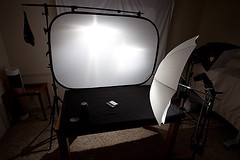


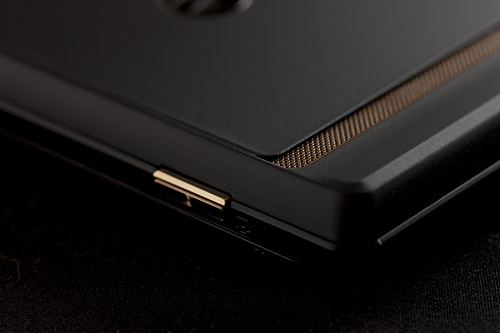


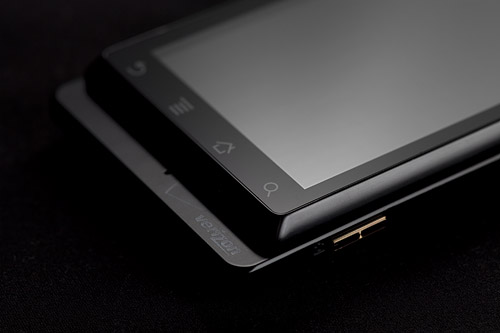
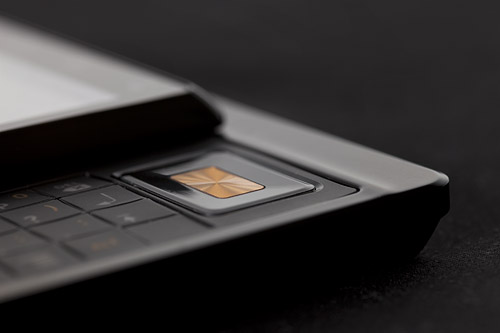



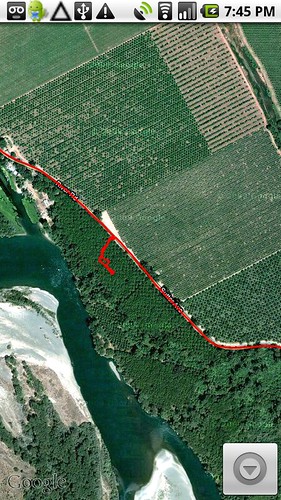
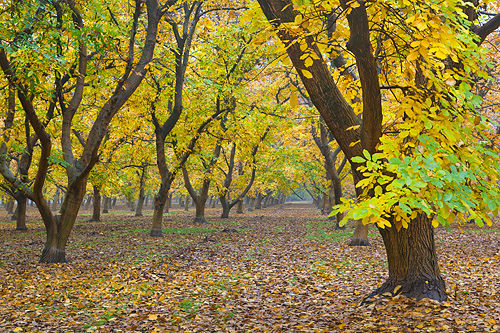
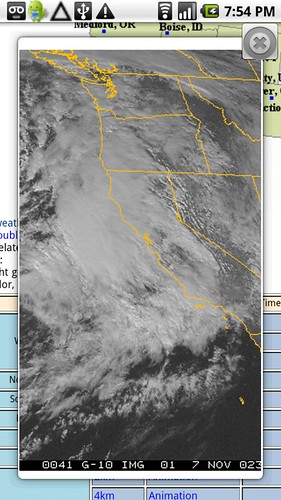
Wow. That GPS stuff looks seriously awesome.
ReplyDeleteAnd thanks for the tip about using GPS tracks for mileage. I'll be stealing that idea. :-)
Interesting. I'm a photographer in Alabama and I am trying to decide between droid and iphone right now. I see a lot of apps for iphone that I think would be cool to have, especially the thing that can fire a remote and view images on the phone. Although I'll be finished shooting basketball by the time I get it, I think it would be cool to review my remote while sitting on the floor.
ReplyDelete